Pan Dulce—the irresistible, sugary delight that has graced Mexican tables for generations! Whether you’ve enjoyed it as a morning treat with coffee or as a sweet snack at a family gathering, this traditional Mexican bread is a true comfort food. But have you ever wondered how to make the perfect pan dulce at home? You’re in for a treat because we’ve got some of the best recipes and tips to help you recreate these soft, golden beauties right in your own kitchen. From the iconic conchas to fruit-filled empanadas, we’ll guide you through the steps, share secrets, and even dive into pairing them with your favorite drinks.
Table of Contents
Discover the Sweet World of Pan Dulce
What is Pan Dulce?
Pan Dulce refers to a variety of traditional Mexican sweet breads that are as rich in flavor as they are in history. These pastries are typically soft, lightly sweetened, and often topped with colorful, sugary coatings that make them instantly recognizable. With roots tracing back to both Spanish influence and indigenous Mexican baking techniques, Pan Dulce has evolved into a beloved treat enjoyed at breakfast or during afternoon coffee breaks. Whether it’s the iconic concha with its sugary shell or a fruit-filled empanada, Pan Dulce offers a delightful fusion of texture and flavor, making it an essential part of Mexican culinary heritage.
Why Pan Dulce Holds a Special Place in Mexican Cuisine
Pan Dulce holds a cherished place in Mexican cuisine, embodying both tradition and culture. It’s more than just a sweet treat—it’s a symbol of togetherness and celebration. Whether enjoyed with family during a leisurely breakfast or shared among friends on festive occasions, Pan Dulce brings people together with its inviting aroma and comforting taste. The artistry behind its preparation, from the delicate dough to the vibrant toppings, reflects the deep-rooted heritage of Mexico. Each bite is a connection to centuries of Mexican baking techniques, making Pan Dulce a timeless treasure that transcends generations, leaving a lasting impact on the culinary landscape.
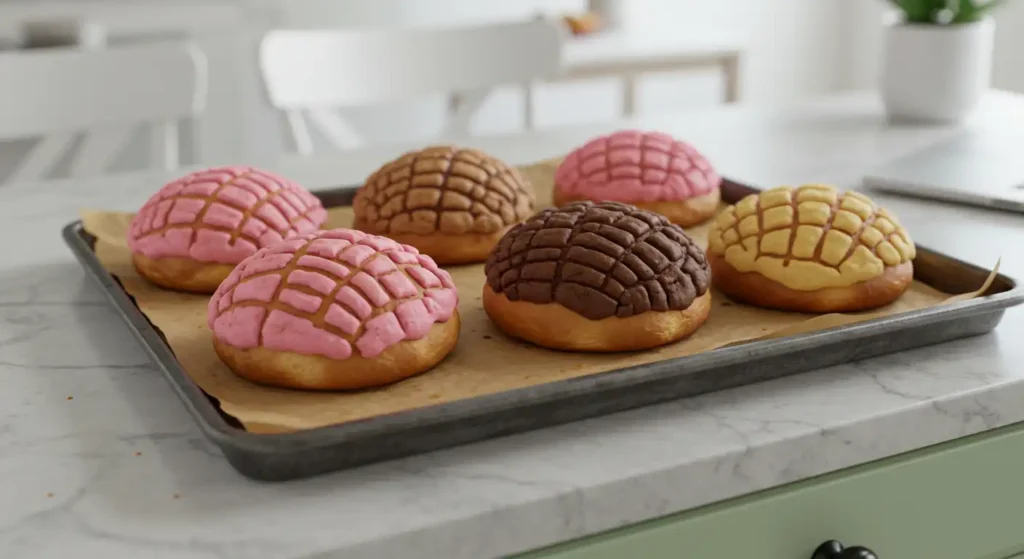
The Origins and History of Pan Dulce
Tracing the Roots: Pan Dulce’s Cultural Significance
Tracing the roots of Pan Dulce reveals a rich cultural tapestry woven from both indigenous and European influences. Introduced by Spanish colonizers, the art of baking sweet bread merged with local traditions, creating a unique evolution in Mexican cuisine. Over time, Pan Dulce became a symbol of Mexican identity, often present at communal gatherings, religious celebrations, and daily rituals. Its variety and craftsmanship reflect regional differences, yet its unifying presence ties together diverse communities. More than just food, Pan Dulce embodies the resilience and creativity of Mexican culture, passed down through generations and cherished as a symbol of hospitality and warmth.
The Evolution of Pan Dulce: From Spanish Influence to Mexican Tradition
The evolution of Pan Dulce is a fascinating journey that began with Spanish influence and transformed into a deeply ingrained Mexican tradition. When the Spanish introduced baking techniques and ingredients like sugar and butter, the foundations for Pan Dulce were laid. However, it was the blending of indigenous Mexican ingredients and methods that elevated these sweet breads into something distinctly Mexican. Over centuries, Pan Dulce has evolved, incorporating unique regional variations and flavors. What began as a colonial influence has now become a cherished staple, symbolizing both cultural fusion and the enduring creativity of Mexican baking traditions.
Essential Ingredients for Traditional Pan Dulce
Key Ingredients in Making Pan Dulce
The key ingredients in making Pan Dulce are essential for achieving its signature flavor and texture. Flour, the cornerstone of the dough, is typically combined with sugar, butter, and eggs, creating a rich, tender crumb. Yeast is crucial for giving the bread its soft, airy structure, while milk adds a subtle creaminess. To enhance the flavor, vanilla and a pinch of salt are often included. The toppings, such as sugary crusts or colorful sprinkles, add a distinctive sweetness and crunch to each variety of Pan Dulce. These simple yet precise ingredients work together to create a delicious, beloved Mexican treat.
How to Choose the Best Flour, Sugar, and Yeast for Perfect Pan Dulce
Choosing the best flour, sugar, and yeast is crucial for perfecting Pan Dulce. For flour, opt for a high-quality all-purpose or bread flour to ensure a light, airy texture. The right flour will allow the dough to rise properly and yield the desired soft crumb. When selecting sugar, fine granulated sugar is ideal, as it dissolves easily, creating a smooth dough and a balanced sweetness. For yeast, choose active dry or instant yeast, which ensures proper fermentation and the signature fluffiness of Pan Dulce. High-quality ingredients are key to achieving the perfect flavor and texture in every batch of this beloved Mexican treat.
Common Variations: How Ingredients Differ Across Regions
The ingredients in Pan Dulce can vary significantly across different regions of Mexico, reflecting local tastes and traditions. In northern Mexico, for example, bakers may incorporate a hint of anise or cinnamon, adding aromatic depth to the dough. In contrast, regions like Oaxaca may infuse their Pan Dulce with indigenous flavors like cocoa or vanilla beans. Toppings also vary widely—while conchas in one area might have a smooth, sugary glaze, others may feature a crumbly topping. These regional differences contribute to the diversity and richness of Pan Dulce, showcasing the versatility and creativity within Mexican baking traditions.
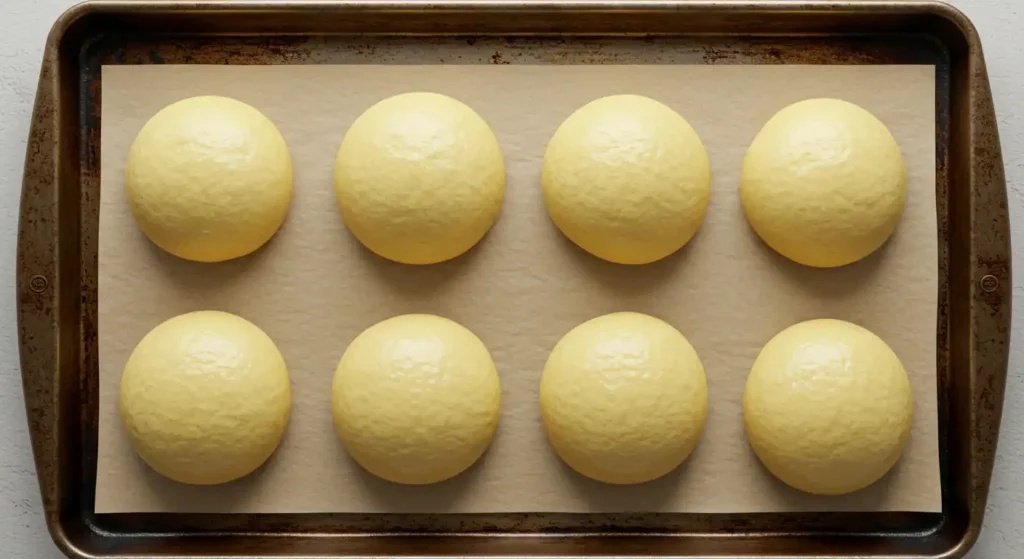
Step-by-Step Guide to Making Pan Dulce at Home
Preparing the Dough: Tips for Soft, Fluffy Results
Preparing the dough for Pan Dulce is a delicate process that requires attention to detail. Start by ensuring the yeast is properly activated, as this will give the bread its light, airy texture. Mixing the dough thoroughly is essential—knead it until smooth and elastic, which will help develop the gluten, ensuring softness. Place the dough in a warm, draft-free space to promote optimal fermentation. Be patient, as the longer rise times can yield fluffier results. When shaping the dough for Pan Dulce, handle it gently to avoid deflating the air pockets that contribute to its tender, pillowy consistency.
Shaping Pan Dulce: A Creative and Fun Process
Shaping Pan Dulce is both an artistic and enjoyable process. Once the dough has risen, it’s time to get creative. For conchas, roll the dough into smooth balls and flatten them slightly, then create the signature sugary topping using a stencil or your hands. For other variations, like carnitas, shape the dough into small horns or spirals, ensuring even thickness for uniform baking. The fun lies in the design—each region and baker brings a personal touch, whether it’s intricate cuts, colorful toppings, or unique forms. The way the dough is shaped not only affects the appearance but also the texture of your final Pan Dulce.
Adding the Toppings: The Sweet Crust That Makes Pan Dulce Stand Out
Adding the toppings is what truly makes Pan Dulce stand out. These sweet crusts are not just for decoration; they enhance both the flavor and texture. For classic conchas, a sugary, crumbly topping is carefully pressed into the dough before baking, forming a delicate, crunchy crust. In other variations, toppings might include cinnamon-sugar blends, colorful sprinkles, or a glossy glaze. The toppings provide contrast to the soft, fluffy interior of the bread, creating a delightful balance of textures. The vibrant colors and rich flavors of the crust are an essential part of what makes each piece of Pan Dulce irresistibly delicious.
Baking Tips: Perfecting Your Pan Dulce Texture and Color
Baking Pan Dulce to perfection requires attention to both texture and color. To achieve a soft, pillowy interior, ensure that the oven is preheated to the correct temperature, usually around 350°F (175°C). Avoid overbaking; a golden, slightly crisp crust is ideal, but it should not turn too dark. For an even bake, place the pastries on a middle rack, allowing the heat to circulate evenly. To enhance color, some bakers apply a light egg wash before baking, which gives the crust a subtle sheen. Timing is key—keep a close eye on your Pan Dulce to ensure the perfect balance of a golden-brown exterior and a tender, airy inside.
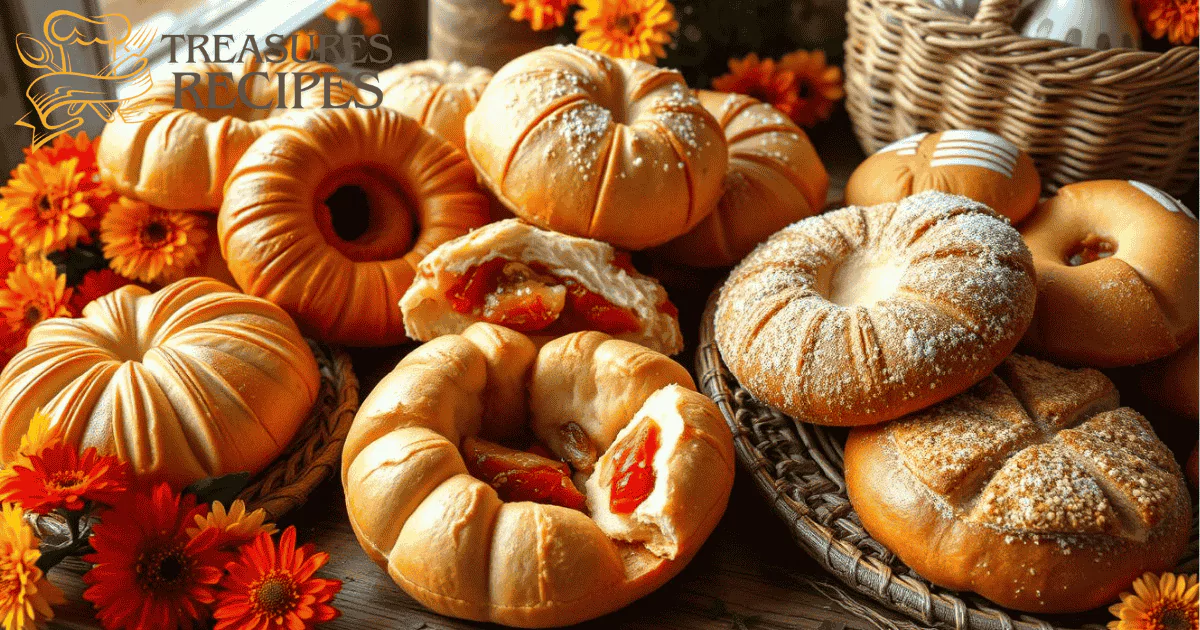
Authentic Mexican Pan Dulce (Conchas and More)
Equipment
- Large mixing bowl
- Wooden spoon or dough hook
- Baking sheets
- Measuring cups and spoons
- Oven
Ingredients
- For Dough:
- 3 cups all-purpose flour
- 1 cup granulated sugar
- 2 eggs
- ½ cup butter
- 1 teaspoon cinnamon
- 1 teaspoon vanilla extract
- ½ teaspoon anise seeds
- For Topping Concha Streusel:
- 1 cup all-purpose flour
- ½ cup sugar
- ½ cup butter
- 1 teaspoon cinnamon
Instructions
- Prepare the Dough:
- In a large mixing bowl, combine flour, sugar, cinnamon, and anise seeds.
- Add butter and mix until it resembles coarse crumbs.
- Gradually add eggs and vanilla. Knead the dough until smooth and elastic.
- Shape the Dough:
- Divide the dough into small balls and place them on a greased baking sheet.
- Prepare the Streusel Topping:
- Mix flour, sugar, butter, and cinnamon until crumbly.
- Flatten a portion of the topping over each dough ball, creating a shell-like design.
- Bake:
- Preheat oven to 350°F (175°C).
- Bake for 20–25 minutes or until golden and topping is crisp.
- Serve:
- Let cool slightly before enjoying with a cup of coffee or hot chocolate.
Notes
- Traditional pan dulce is hand-shaped and often baked in wood-fired ovens, imparting unique textures.
- Spices like cinnamon and anise add the characteristic flavor profile of Mexican pastries.
- Perfectly paired with hot chocolate or Mexican coffee (café de olla).
Popular Types of Pan Dulce and How to Make Them
Conchas: The Most Iconic Mexican Sweet Bread
Conchas are perhaps the most iconic variety of Pan Dulce, instantly recognizable by their sugary, shell-like crust. Named after their resemblance to seashells, Conchas are soft, fluffy sweetbreads topped with a crunchy, sweet topping that comes in various colors—typically white, pink, and yellow. The dough itself is rich and tender, infused with a subtle vanilla flavor, making every bite a delightful experience. Often enjoyed with a warm beverage like hot chocolate or coffee, Conchas are a beloved staple in Mexican bakeries, symbolizing comfort and tradition. Their perfect balance of texture and sweetness makes them a favorite treat for all ages.
Pan de Muerto: A Special Bread for the Day of the Dead
Pan de Muerto is a traditional Pan Dulce enjoyed during Día de los Muertos, a celebration honoring deceased loved ones. This sweet, round bread is often adorned with bone-shaped decorations on top, symbolizing the cycle of life and death. The dough, typically flavored with orange zest and a hint of anise, has a soft, pillowy texture that is both comforting and celebratory. Pan de Muerto is often sprinkled with sugar, adding a light sweetness to the rich, aromatic bread. Served alongside offerings for the departed, this Pan Dulce is not only a delicious treat but also a meaningful cultural symbol.
Cuernitos: The Soft and Sweet Mexican Horn-shaped Bread
Cuernitos are a delicious variety of Pan Dulce known for their distinctive horn shape. These soft, sweetbreads are lightly sweetened and often have a slightly flaky texture, making them a perfect treat for breakfast or an afternoon snack. Their dough is rich and buttery, sometimes flavored with a hint of vanilla or orange zest. Cuernitos are typically glazed with sugar before baking, creating a light, crispy crust that complements their tender interior. This charming Mexican pastry is a staple in bakeries, offering a subtle yet satisfying sweetness that makes each bite a comforting experience.
Empanadas de Fruta: Fruit-filled Pan Dulce Varieties
Empanadas de Fruta is a delightful variation of Pan Dulce, offering a sweet, fruity twist on traditional Mexican pastries. These soft, golden turnovers are filled with a variety of fruits, such as apple, pineapple, or guava, creating a harmonious blend of flavors. The dough is buttery and light, with a slight crispiness around the edges that contrasts beautifully with the sweet, juicy filling. Often sprinkled with sugar, Empanadas de Fruta have a pleasant sweetness that makes them a favorite among both children and adults. Whether enjoyed with coffee or as a snack, they are a perfect example of the versatility of Pan Dulce.
Roscas de Reyes: A Traditional Sweet Bread for the Epiphany
Roscas de Reyes is a traditional Pan Dulce enjoyed during the celebration of Epiphany, marking the arrival of the Three Kings. This sweet, round bread is typically decorated with colorful candied fruits, symbolizing the jewels of the Kings’ crowns. The dough is soft and slightly sweet, often flavored with a hint of orange blossom or anise. Hidden within the bread is a small figurine, and the person who finds it is expected to host a celebration on Día de la Candelaria. Rosas de Reyes is not just a delicious Pan Dulce but also an important cultural tradition, bringing families and communities together to celebrate.
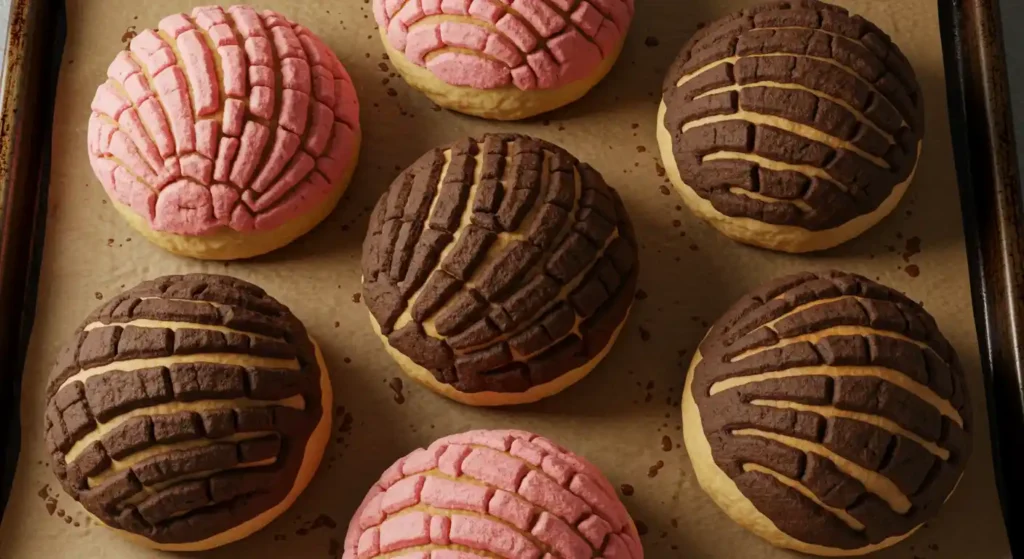
Tips and Tricks for Perfect Pan Dulce Every Time
How to Avoid Common Mistakes When Making Pan Dulce
When making Pan Dulce, avoiding common mistakes is essential for achieving perfect results. First, be cautious with yeast—using expired or improperly activated yeast can prevent the dough from rising. Ensure your dough is not over-kneaded, which can lead to a dense texture rather than the desired fluffiness. Another mistake is not allowing sufficient rising time, which is crucial for achieving soft, airy Pan Dulce. Additionally, be mindful of oven temperature—too high or too low can affect the texture and color of the bread. Lastly, ensure your toppings are applied just before baking to maintain their crunch and sweetness, ensuring your Pan Dulce is both delicious and visually appealing.
How to Know When Your Pan Dulce Is Perfectly Baked
To determine when your Pan Dulce is perfectly baked, start by checking the color. The crust should be golden brown, with a slight sheen from any egg wash or sugar glaze. Gently tap the bottom of the bread—if it sounds hollow, it’s a sign that the interior has cooked through. Another indicator is the texture: your Pan Dulce should be soft and airy inside, without being doughy. The surface should feel firm to the touch, and the edges should not be overly darkened. If all these signs align, your Pan Dulce is ready to be enjoyed fresh out of the oven.
Storing and Freezing Pan Dulce for Later Enjoyment
To store Pan Dulce for later enjoyment, keep it in an airtight container at room temperature for up to 3 days. This will help preserve its freshness and soft texture. For longer storage, freezing is a great option. Wrap individual pieces tightly in plastic wrap or aluminum foil, and then place them in a freezer-safe bag or container. To thaw, simply leave them at room temperature for a few hours, or reheat them in the oven at a low temperature for a few minutes to regain that freshly baked softness. Freezing Pan Dulce ensures you can enjoy this delightful treat anytime.
Pairing Pan Dulce with Drinks and Other Mexican Treats
The Best Beverages to Pair with Pan Dulce
The perfect beverage can elevate the experience of enjoying Pan Dulce. For a traditional pairing, a rich Mexican hot chocolate, with its creamy texture and hint of cinnamon, complements the sweet and buttery flavors of Pan Dulce. Coffee, whether black or with milk, also offers a delightful contrast, balancing the bread’s sweetness with a mild bitterness. For a lighter option, a warm atole, made with cornmeal and flavored with vanilla or chocolate, adds a comforting touch. If you’re craving something cold, a refreshing horchata, with its smooth and slightly spiced taste, is an excellent choice to accompany Pan Dulce.
How to Serve Pan Dulce for Special Occasions
Serving Pan Dulce on special occasions adds a delightful, festive touch to any gathering. For a Mexican-themed celebration, present an assortment of Pan Dulce, such as conchas, empanadas, and cuernitos, arranged on an elegant platter. To enhance the experience, serve alongside traditional beverages like hot chocolate or coffee. For a brunch or family event, pair Pan Dulce with fresh fruit, cheese, or yogurt to create a balanced spread. To make it extra special, consider placing a decorative centerpiece of Pan Dulce, inviting guests to enjoy its sweet offerings throughout the occasion. The aroma and variety will surely impress.
Complementing Pan Dulce with Other Mexican Desserts
Complementing Pan Dulce with other Mexican desserts creates a delightful and indulgent spread. For a perfect balance, pair it with a creamy flan, whose smooth texture contrasts beautifully with the soft, sweet bread. Alternatively, the rich taste of tres leches cake can enhance the experience, offering a decadent, moist bite to accompany your Pan Dulce. Mexican sweet tamales, filled with chocolate or cinnamon, also make an excellent pairing, bringing a savory-sweet harmony. Adding a few churros, dusted with cinnamon and sugar, will provide a crispy contrast. These desserts, alongside Pan Dulce, will undoubtedly delight any sweet tooth.
Frequently Asked Questions (FAQs)
Are conchas part of pan dulce or are they different?
Conchas are a type of pan dulce. They are one of the most popular variations, recognized for their shell-like shape and sugary topping. While they belong to the pan dulce category, they are distinct due to their unique texture and flavor.
What are the best pairings to enjoy with pan dulce?
Pan dulce pairs perfectly with a hot beverage such as hot chocolate, or coffee, or a traditional Mexican drink like café de olla. It can also be enjoyed with fresh fruit or cream, enhancing its sweetness for a well-balanced tasting experience.
Why are they called “conchas”?
The name “conchas” comes from the distinctive shape of the pastry, resembling a seashell. The sugary crust on top, often striped, mimics the appearance of a shell. Thus, the name reflects both its look and its cultural roots in Mexico.
What makes pan dulce so beloved by everyone?
Pan dulce is loved for its light, airy texture and its comforting, sweet flavor. Its variety of shapes and flavors, which differ by region, make it an accessible treat for all. It is also deeply rooted in family traditions and Mexican culture.
How many variations of pan dulce exist in Mexican culture?
There are numerous variations of pan dulce in Mexico, with each region offering its own specialties. Some of the most famous include conchas, empanadas de fruta, cuernitos, and pan de muerto. Each type stands out due to its unique ingredients, shape, and preparation method.
What beverages pair perfectly with pan dulce?
Pan dulce goes wonderfully with hot drinks like hot chocolate, coffee, or milk. For a traditional Mexican touch, it pairs excellently with café de olla or atole, a warm corn-based drink. These beverages enhance the sweet flavors of the pastry.
When is it traditional to enjoy pan dulce?
Pan dulce is typically enjoyed for breakfast or as an afternoon snack. In Mexico, it’s common to pair it with coffee or hot chocolate. It is also a popular treat during celebrations or family gatherings, making it a staple in daily life.
Which countries have most influenced the evolution of pan dulce in Mexico?
Pan dulce has been heavily influenced by Spain, particularly through the introduction of baking techniques and ingredients like sugar and yeast. French influence is also notable, especially in pastries like cuernitos. These two cultures helped shape the pan dulce recipes known today in Mexico.
Bringing the Flavor of Pan Dulce into Your Kitchen
Why Making Pan Dulce at Home is Worth the Effort
Making Pan Dulce at home is a rewarding experience that offers a level of freshness and authenticity that store-bought versions simply can’t match. The process allows you to control every element, from the choice of ingredients to the perfect texture of the bread. The aroma of freshly baked Pan Dulce fills the home, creating an irresistible atmosphere. Additionally, homemade versions can be customized with toppings or fillings to suit personal preferences. The satisfaction of enjoying warm, perfectly crafted Pan Dulce with loved ones makes the effort well worth it, creating lasting memories and unparalleled flavor.
Embracing the Tradition: How Pan Dulce Connects Generations
Pan Dulce is more than just a sweet treat; it is a cultural tradition that spans generations. From grandparents passing down their favorite recipes to children learning the art of baking, this beloved bread connects families across time. The act of sharing Pan Dulce during holidays, celebrations, or simple gatherings fosters a sense of unity and nostalgia. Each bite carries the essence of shared history and cherished moments. By embracing the tradition of Pan Dulce, families honor their heritage while creating new memories together, preserving a rich legacy for future generations to enjoy and cherish.

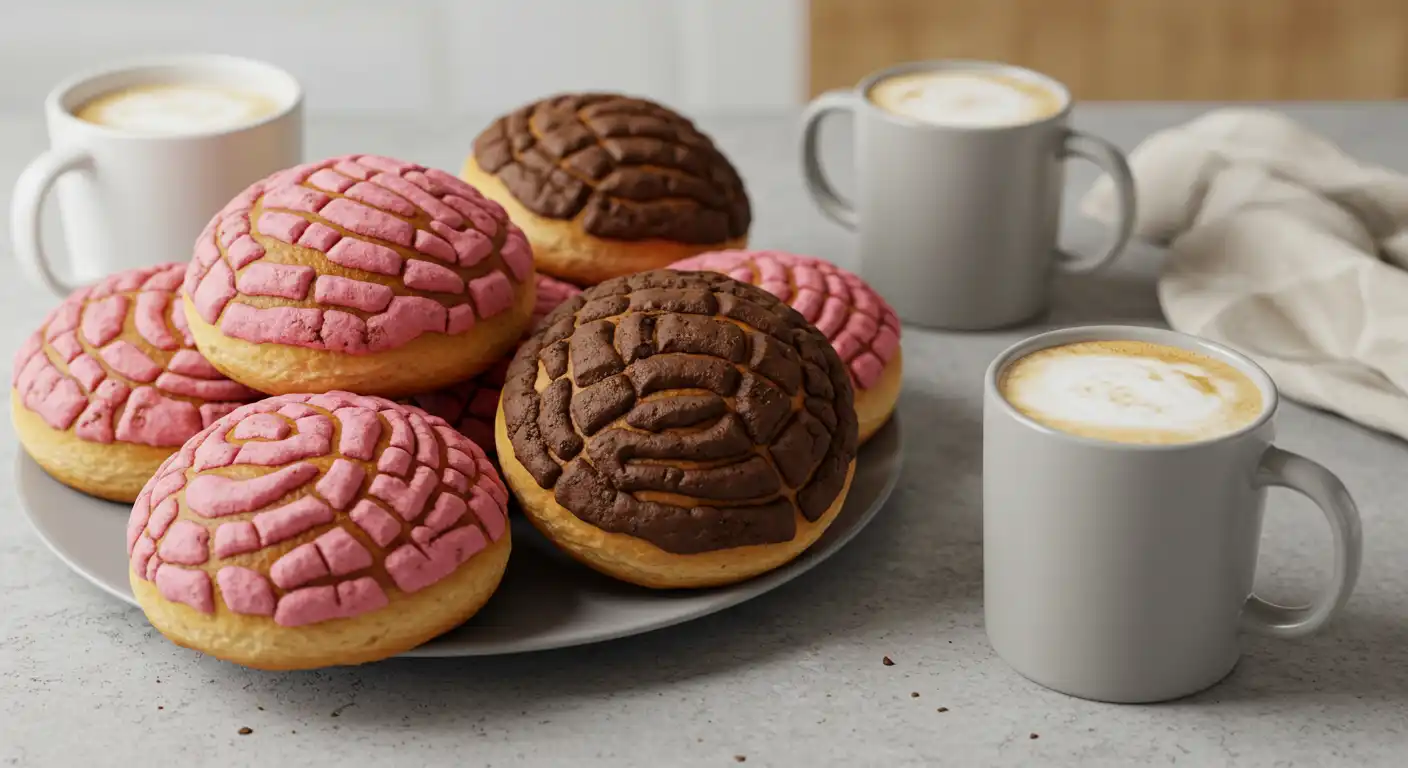
3 thoughts on “The Best Pan Dulce Recipes”